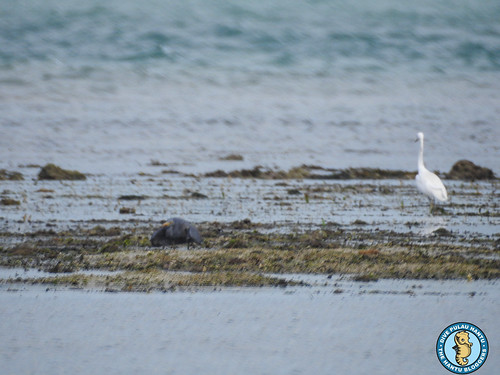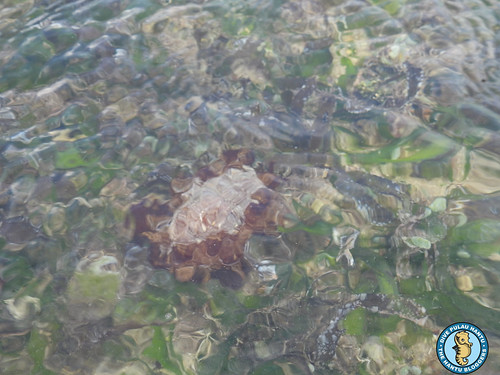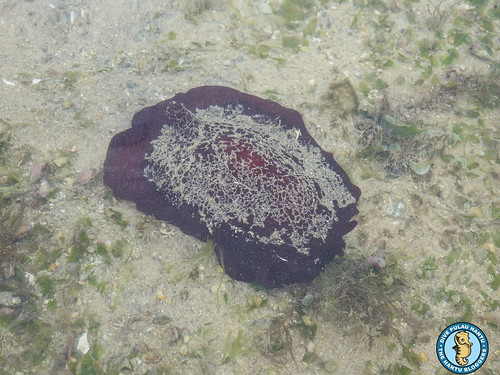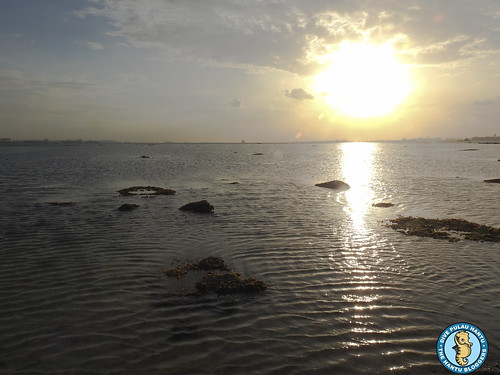Hidden Treasure
 February 13, 2017
February 13, 2017

It can be hard to get a grip on what stands out in Singapore. Buildings change. Landscapes change. Places from our childhood disappear. Where can we go where we can set foot on sand that was not moved by humans? Cyrene Reef is one of those places. I was fortunate to visit this reef thanks to a trip organised by Ria Tan who is one of the many people who have been sharing and monitoring this reef for over a decade.

Where is Cyrene Reef? It’s hard to imagine that this impressive and diverse landscape is nestled amidst some of Singapore’s heaviest industries. The world’s second busiest port to the north, petrochemical industries to the west and south, and a massive anchorage site to the east. How this reef has managed to survive Singapore’s rapid and fervent development has probably a lot to do with luck. But luck eventually runs out. And it will be up to voices of people like you and me, who will decide if this reef and the life and history that it is host to, will persist into our future.

Getting to Cyrene Reef is a little tricky. Even though it’s a walk, you have to be prepared to get wet. Despite being in a dingy, strong winds and choppy waters send nice slabs of salty sea water onto your chest. Your legs will certainly get wet. Then you have to land. That requires a literal leap of faith into turbid waters that shroud urchins, coral, rock, the razor-sharp lips of pen shells, and of course thousands of tiny shells. Apart from our own safety, we want to take care not to stomp on this fragile albeit fearsome habitat.

With care and caution, all is well. Let the exploration begin!

Being fond of feathered creatures I quickly spotted this flock of Pacific golden plovers. These birds are amazing – they breed in the Palearctic tundra of Siberia and Western Alaska and migrate down to Central and Southeast Asia, some even to New Zealand, to escape the bitter winters. I imagine winter must be reaaaally bad up there to motivate such a movement. But what I cannot ever imagine is the variety of changing landscapes that these birds migrate over every year. I’m so glad we have this little patch reef out in our tiny ocean to offer them some reprieve along their migration. Perhaps they spend all winter here in Singapore? A question we don’t yet know the answer to. It may not seem like much, but just a few dozen calories can mean the difference between life or death for these birds. So every morsel of shellfish counts, and a rest stop like this can make or break a successful migration.

Please allow me to indulge a bit more in the birds before we move on to spineless creatures. This is not a great photo but its the best I could manage while standing ankle deep in water with stand shifting with every wave. I was wondering what this funny round blob sticking out on top of the sand bar was. I saw it shift and then stay still for almost a minute or two. I was curious, so I watched. From a distance, it looked like a porcupine.
The porcupine turned out to be a Pacific reef egret. I found it interesting that the other egrets were not using the same hunting method of crouching and stalking with wings hanging low and outstretched. I wonder if that has anything to do with the coloration – a bright, white egret would still be obvious even if it was crouching. I believe both white and grey-coloured birds are Pacific reef egrets. It was my first time noticing an egret hunting this way.

Birds are a good sign. Because it means there’s lots of food. Would an egret find this little Worm-eel a tasty treat? I think so. Best it stays close to the seagrass!

Speaking of seagrass – this is one of the reasons Cyrene is home to so many creatures. With sand bars, sea grass, rocky outcrops and coral reefs, there is a lot of habitat for many different types of creatures to forage and hide. Look at this view. Isn’t it fantastic!?

Ria pointed out this Forskal’s sidegill slug Pleurobranchus forskalii. I am learning that it’s much easier to photograph sea slugs when I am in the water with them.

Here’s another one that was closer to the surface and with a lot less wind stirring up the waters’ surface.

This is what a big one looks like. It has less patterns on its back and is a dark maroon colour. The fractals we see on the back of this one are grains of sand and silt that have gotten stuck with the mucous secreted by the slug to protect its skin.

I was very happy to meet some of the famous Chocolate chip sea stars Protoreaster nodosus that have become synonymous with Cyrene Reef. I have never encountered these while diving in Singapore waters, so it was quite a treat to have encountered several during this trip. According to the others, there are usually more scattered throughout the reef. For some reason there were less of them today. Perhaps they have moved off into the deeper parts of the reef. Perhaps all the rain or temperatures might have something to do with it.

We encountered this beautiful Grey bonnet snail. It’s easy to dismiss snails as slow and benign. Things that die when people accidentally step on them. To other creatures like sea urchins, these snails mean RUN! How can a snail with its soft foot possibly overcome an urchin? This snail has some tricks up its… foot. It comes in the form of a paralytic enzyme secreted from its salivary gland. It then secretes sulfuric acid to dissolve the sea urchin shell before consuming it. Not so benign after all! Marcus explained that the hard, scalloped edges at the front of its shell help the snail with digging and burrowing into the sand. Check out the video here.

A tiny squid finds shelter in the seagrass. Check out the video here.

Another unassuming predator on this reef is the Haddon’s carpet anemone Stichodactyla haddoni. Like coral, these animals have algae (zooxanthellae) in their skin that helps them make food. But they also hunt. These anemones can grab fish by folding their oral disc over their prey. Gnarly!

Impressive seagrass meadows! I bet it would be amazing to dive this reef during the high tide. Any takers?

Dugong feeding trail! It’s crazy to imagine a dugong making its way through all the sea traffic to graze on the seagrasses at Cyrene.

Natural shores are few on the mainland. With places like Cyrene, we can get a glimpse of the potential that our reefs used to have. Perhaps it can inspire us to restore damaged and degraded coasts into more productive ecosystems. Rather than hardening shores, perhaps we can challenge ourselves to call upon new ideas and technology to work with rather than against nature. Seagrasses, coral reefs and mangroves do not look as imposing as walls of concrete, but they do a much better job of mitigating coastal erosion while serving so many other benefits.

A beautiful rainbow arched over a horizon lined with container ports and cranes.

One last look at the Pacific reef egret.

Sunset and a rising tide was our signal to leave. Big THANK YOU to Ria Tan for organising this splendid trip which hopefully will be the first of many! Get the latest updates of our adventures by following us on Facebook! Kok Sheng and Ria also blogged about this visit!
 Posted in
Posted in 



 content rss
content rss
COMMENTS